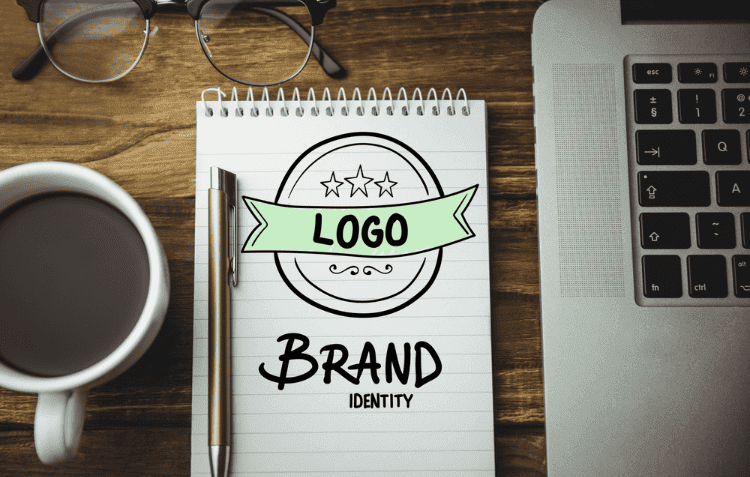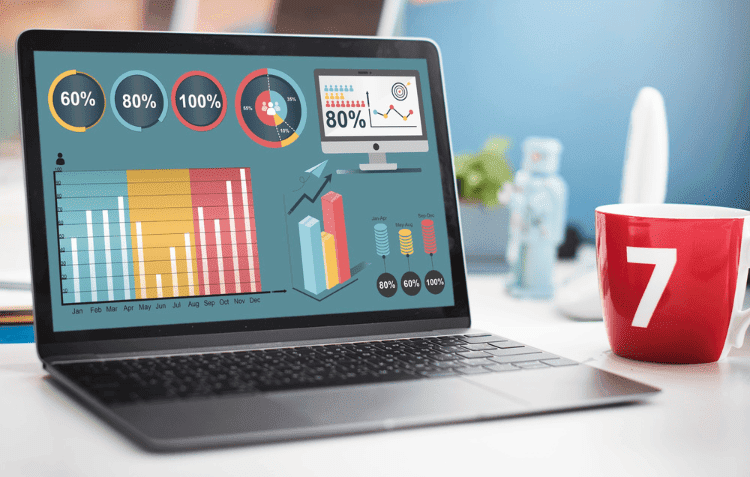Top 5 Automotive Email Marketing Strategies
In the fast-moving world of automotive retail, where competition is fierce and customer expectations keep evolving, staying connected with buyers is more important than ever. That’s where automotive email marketing comes in — a powerful digital strategy used by car dealerships, auto repair shops, and vehicle service centers to communicate directly with customers and drive real business results.
Unlike social media or paid ads, email allows you to speak to your audience on a one-to-one level, offering personalized updates, service reminders, exclusive promotions, and post-sale follow-ups. It’s a proven tool that consistently delivers strong results — in fact, email marketing brings in $36 for every $1 spent, according to Litmus.
For automotive businesses looking to boost engagement, loyalty, and sales without overspending, email remains a top-performing channel. In this guide, you’ll discover strategies that are not just effective — they’re built to convert.
Key Takeaways
- Email marketing remains one of the most cost-effective tools for automotive customer engagement.
- Personalized and segmented emails boost open and click-through rates significantly.
- Automation helps deliver timely messages like service reminders and special offers.
- Visuals and interactive elements improve engagement, especially on mobile devices.
- Customer feedback emails enhance trust, satisfaction, and service quality.
- Compliance with GDPR and CAN-SPAM is crucial for maintaining credibility.
- Regular testing and performance tracking lead to better campaign results over time.
You Might be Interested: Avoid These 10 Common Marketing Automation Mistakes
What Is Automotive Email Marketing and Why Does It Matter?
Automotive email marketing is a targeted digital communication strategy designed for the car industry. It helps dealerships and auto service providers connect with customers at every stage of their journey — from leads to loyal clients.
Definition and Core Objectives
At its core, automotive email marketing involves sending personalized, timely, and relevant emails to car buyers, service customers, and vehicle owners. These emails can take many forms, such as:
- Exclusive promotions or deals on new models
- Routine maintenance reminders
- Loyalty programs for returning customers
- Lead nurturing sequences for shoppers still deciding
- Event invitations or dealership updates
The main goal of automotive email marketing is to keep customers engaged and guide them through the lifecycle — from interest to purchase, and beyond.
Why It’s Crucial for Dealerships and Auto Services
The auto industry is changing fast. Buyers spend more time researching online, and decision-making takes longer than it used to. In fact, 90% of car buyers research online before visiting a dealership (Think with Google).
This shift makes email marketing essential. It allows businesses to stay top-of-mind, provide value through helpful content, and build trust before a sale even happens — all while automating outreach at scale.
You Might be Interested: Amazon Agency Cold Calling Email Strategies That Work in 2025
Strategy 1 – Segment Your Email List for Better Engagement
Segmentation is the backbone of high-performing email marketing in the automotive world. By dividing your email list into targeted groups, you boost personalization, which leads to higher engagement and conversions.
Types of Segmentation That Work
Not all customers are the same — so why send them the same email?
Here are smart ways to segment your automotive email lists:
- New Leads: People who downloaded a brochure or filled out a contact form.
- Past Buyers: Customers who purchased a vehicle, ideal for trade-in offers or loyalty deals.
- Service Customers: Those who’ve used your repair or maintenance services.
- Financing Prospects: Leads interested in loans or payment options.
You can segment by demographics (age, income), vehicle type, buying stage, geography, or even service history from your CRM system.
Example Campaign
Let’s say a customer bought a car from your dealership three years ago. You could send them:
“Your vehicle might be due for a trade-in — check your car’s current value in 30 seconds.”
This kind of timely, relevant messaging boosts response rates and builds long-term relationships.
Stats to Support
Personalization pays off. According to Experian, personalized emails drive 6x higher transaction rates than generic mass emails. For dealerships, segmentation can be the difference between being ignored and being remembered.
You Might be Interested: How to Set Up Prepop Email Lead Capture & Increase CTR
Strategy 2 – Use Automated Drip Campaigns for Nurturing Leads

Automated drip campaigns are a powerful way to turn warm leads into paying customers — without constantly writing new emails. They save time and keep your brand active in the customer’s inbox.
Drip Campaigns Explained
A drip campaign is a series of pre-written, automated emails triggered by user actions — like requesting a quote or booking a test drive. These campaigns help you:
- Stay connected without being pushy
- Guide buyers through the decision-making process
- Offer value at the right time
Ideal Drip Series Examples
Here’s how a simple lead-nurturing drip could look:
- Email 1 – “Thanks for your interest! Here’s a quick intro to our dealership.”
- Email 2 – “Compare top models: See what fits your lifestyle and budget.”
- Email 3 – “Exclusive Offer: 0% APR for 36 months. Ends soon!”
- Email 4 – “Book your test drive today — let’s get you behind the wheel.”
The timing between emails can be spread over a few days or weeks, based on customer behavior.
Tools and Stats
Tools like Mailchimp, ActiveCampaign, and HubSpot make automation easy — especially when connected to your CRM.
And it works: Automated emails generate 320% more revenue than non-automated campaigns (Campaign Monitor). For auto dealers, this means more sales with less manual work.
You Might be Interested: How Do Churches Do Weekly Automated Emails Effectively?
Strategy 3 – Promote Seasonal Offers and Service Reminders
Seasonal campaigns and service reminders help you stay relevant throughout the year while increasing repeat visits and customer lifetime value (CLV).
Seasonal and Local Event Tie-ins
People are more likely to act on offers when they feel urgent or locally relevant. That’s why seasonal promotions perform well.
Examples:
- Winter (Canada/UK) – “Get your winter tires and battery check before the first frost!”
- Spring Tune-Up – “Ensure your vehicle is road-trip ready.”
- Back-to-School – “Safety checks for student drivers.”
You can also tie campaigns to local events, like a county fair, dealership anniversary, or tax refund season.
Service Reminder Campaigns
Don’t wait for customers to remember their oil change or brake inspection.
Use your dealership’s CRM to trigger automated reminders based on:
- Mileage (e.g., every 5,000 miles)
- Time since last visit (e.g., 6-month intervals)
- Type of service previously used
These messages should be short, friendly, and action-oriented, like:
“It’s been 6 months since your last oil change — book your service in under 60 seconds.”
Case Study Mention
A Honda dealership in Melbourne used automated service reminders tied to mileage data and saw a 23% increase in service appointments within three months. This shows how timely nudges can drive real, measurable results.
You Might be Interested: Don’t Miss These Essential 5 Emails Every Biz Needs to Thrive
Strategy 4 – Use Rich Visuals and Interactive Elements
Modern email marketing isn’t just about text — visuals and interactivity play a big role in capturing attention. In the automotive space, this becomes even more crucial as buyers want to see, explore, and engage with vehicles before visiting a dealership.
Visual Content Ideas
Including high-quality visuals brings your vehicles to life. Consider adding:
- New model highlights with key specs and prices
- 360° views of the interior and exterior
- Animated GIFs showing car features in motion
- Embedded videos introducing dealership staff or test drives
- Interactive CTAs like “Book a Test Drive” or “Estimate Trade-In Value”
These elements make emails more engaging and informative, helping buyers visualize ownership.
Why This Works
Emails that include videos see up to 300% higher engagement rates, according to Forrester Research (2023). For dealerships, this translates to better click-throughs, more appointments, and stronger buyer interest.
Design Tip
Since over 60% of emails are opened on mobile devices, use responsive design to ensure visuals and CTAs load correctly on all screen sizes. Keep file sizes small and use concise, image-supported content for faster load times.
You Might be Interested: 10 Powerful Email Organization Tips to Simplify Your Inbox
Strategy 5 – Collect and Use Customer Feedback Through Emails
Feedback isn’t just for fixing problems — it’s a goldmine for building trust, improving service, and showing customers that their opinions matter. For car dealerships and service centers, this can become a powerful retention tool.
Types of Feedback Emails
Use email campaigns to gather insights after:
- Service visits: “How was your oil change experience?”
- Vehicle purchases: “Are you happy with your new car?”
- General check-ins: Net Promoter Score (NPS) surveys to assess loyalty
These emails should be simple, mobile-friendly, and quick to answer — ideally with clickable response options or short forms.
Benefits
Collecting and using customer feedback can help:
- Identify service gaps and resolve issues faster
- Upsell services based on customer needs
- Improve customer loyalty and satisfaction
- Strengthen online reputation with better reviews
It also shows you care — which boosts your E-E-A-T signals (Experience, Expertise, Authoritativeness, and Trustworthiness) in Google’s eyes.
Real Example
After adding post-service feedback requests, Toyota UK increased repeat service bookings by 18%, highlighting how small gestures can yield big returns.
You Might be Interested: Top Proven Email Marketing Strategies to Maximize Engagement
Bonus Tips for a Winning Automotive Email Marketing Strategy

Small changes can lead to big performance gains in your automotive email campaigns. Here are a few bonus tips every marketer should follow:
Quick Wins:
- A/B Test Subject Lines
Test different formats, tones, and lengths to see what your audience clicks most. - Optimize for Mobile
Design with mobile-first principles — short headlines, large buttons, and fast-loading visuals. - Use Clear CTAs
Tell readers exactly what to do next: “Book Now,” “View Offer,” or “Check Inventory.” - Maintain GDPR/CCPA Compliance
Make sure you have user consent, offer easy unsubscribe options, and respect privacy laws across regions. - Stick to a Consistent Sending Schedule
Whether weekly or monthly, consistency builds anticipation and improves open rates.
By following these best practices, you can boost your campaign performance while keeping your brand professional and trustworthy.
You Might be Interested: Video Marketing Trends: Proven Strategies for 2025
Key Benefits of Automotive Email Marketing
Automotive email marketing offers unique advantages that make it one of the most effective tools for growth, retention, and customer engagement.
Direct and Personal Communication
Email allows for 1-to-1 conversations with leads and customers, creating a sense of personal attention that strengthens relationships.
Cost-Effective Compared to Traditional Advertising
Print ads, billboards, and TV spots can be expensive. In contrast, email offers a high ROI with minimal investment — averaging $36 per $1 spent, per Litmus (2023).
Higher Retention and Repeat Business
Through service reminders, loyalty rewards, and seasonal offers, email keeps you top of mind. This leads to more repeat visits and higher customer lifetime value.
Better Data Tracking and ROI
Every campaign can be tracked in real time — opens, clicks, conversions — allowing you to optimize and adjust strategies on the fly.
Common Mistakes to Avoid
Even well-meaning email campaigns can underperform if common pitfalls are ignored. Here are mistakes automotive businesses should steer clear of:
Over-Emailing or Spamming
Sending too many emails — especially irrelevant ones — leads to unsubscribes, spam reports, and a damaged sender reputation.
Generic or Irrelevant Content
Using the same email for all recipients results in low engagement. Instead, use segmentation and dynamic content.
Ignoring Mobile Optimization
Most email opens happen on smartphones. A poorly formatted message on mobile means missed opportunities.
Not Tracking Performance Metrics
Failing to monitor open rates, click-through rates, and conversions leaves you flying blind. Use built-in analytics tools to refine your strategy.
Weak Subject Lines or CTAs
If your subject line doesn’t spark curiosity or your CTA lacks urgency, your email may never get opened — let alone clicked.
Avoiding these common issues helps maintain list health, improve engagement, and boost campaign results.
You Might be Interested: 10 Powerful Influencer Marketing Tips to Elevate Your Brand
Conclusion & Final Thoughts
Automotive email marketing is more than just sending messages — it’s about building relationships that drive real results. With the right strategies in place, dealerships and auto service providers can connect directly with buyers, increase loyalty, and convert leads into long-term customers.
Whether it’s through smart segmentation, automated campaigns, seasonal offers, or customer feedback loops, the power of email lies in its ability to deliver value — consistently and personally.
You don’t need to do everything at once. Start small, test what works, and build from there. Focus on delivering helpful content, being timely, and always respecting your customer’s inbox.
Start building smarter campaigns today — and turn emails into test drives, service bookings, and lasting loyalty.
FAQs
What types of emails are most effective for car dealerships?
Effective emails include welcome messages, service reminders, promotional offers, and post-service follow-ups, all tailored to the customer’s journey.
How often should dealerships send marketing emails?
A consistent schedule—such as monthly newsletters or timely service reminders—keeps customers engaged without overwhelming them.
What are the key benefits of automotive email marketing?
Email marketing offers direct communication, cost-effectiveness, personalized content, and measurable ROI, making it ideal for customer retention and sales growth.
How can personalization enhance email marketing effectiveness?
Personalized emails, based on customer data like purchase history or service records, increase relevance and engagement, leading to higher conversion rates.
What tools can assist in automotive email marketing?
Platforms like Mailchimp, ActiveCampaign, and HubSpot offer automation, segmentation, and analytics features tailored for automotive marketing needs.







